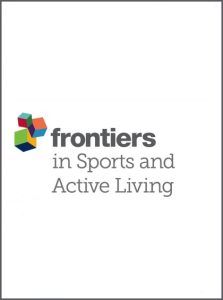Publications

Which muscles exhibit increased stiffness in people with chronic neck pain? A systematic review with meta-analysis
Authors: Manca Opara 1, Ziga Kozinc 1, 2
Affiliations:
- Faculty of Health Sciences, University of Primorska, Izola, Slovenia
- Department of Health Studies, Andrej Marusic Institute, University of Primorska, Koper, Slovenia
Journal: Frontiers in Sports and Active Living - August 2023, Volume 5, Article no. 1172514 (DOI: 10.3389/fspor.2023.1172514)
-
Field & Applications:
- Medical
- Musculoskeletal disorder
- Review
Introduction: Chronic neck pain (CNP) substantially impacts quality of life, posing both personal challenges and economic strains. This systematic review sought to discern muscle-specific stiffness differences between CNP patients and individuals without CNP.
Methods: We searched the PubMed, Scopus, and PEDro databases for studies using ultrasound elastography or myotonometry to compare muscle stiffness between CNP patients and asymptomatic controls. Using a meta-analysis with a random-effects model, we derived the pooled effect as standardized mean difference (SMD).
Results: Out of the six studies selected, the adjusted Newcastle-Ottawa rating scale for cross-sectional studies denoted three as moderate-quality and three as high-quality. Our findings indicate that the upper trapezius (UT) stiffness was elevated in CNP patients compared to their counterparts without CNP (SMD = 0.39, 95% CI = 0.05 to 0.74; p = 0.03; small effect size). The data for other muscles remained inconclusive.
Discussion: Given the case-control design of all reviewed studies, a direct causative link between UT stiffness and CNP is yet to be confirmed. As such, recommending a reduction in trapezius muscle stiffness as a primary rehabilitation strategy for CNP patients is still inconclusive and further research is needed.
Keywords: chronic neck pain, shear modulus, elastography, myotonometry, upper trapezius
This article aimed to investigate which muscles exhibit increased stiffness in patients with CNP. Only a small increase in stiffness for the trapezius muscle was confirmed, whereas stiffness of the other muscles was similar in CNP patients and asymptomatic individuals. Nonetheless, a definitive link between muscle stiffness and CNP remains unestablished. As such, recommending a reduction in trapezius muscle stiffness as a primary rehabilitation strategy is still inconclusive and further research is needed.


